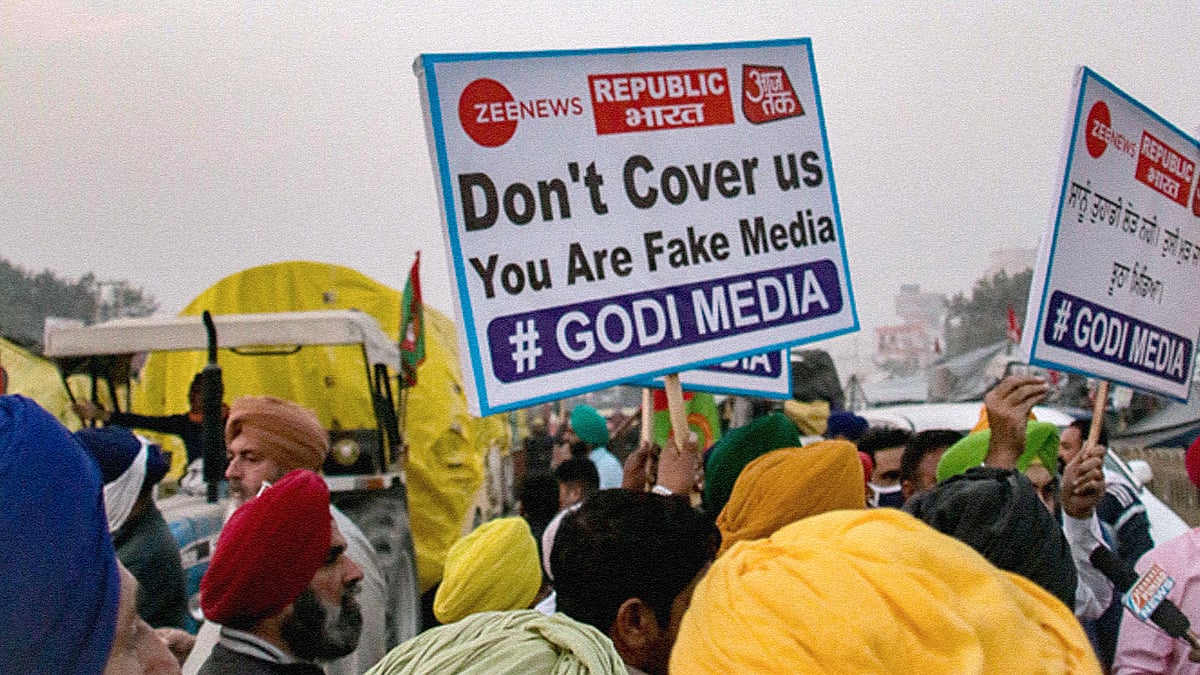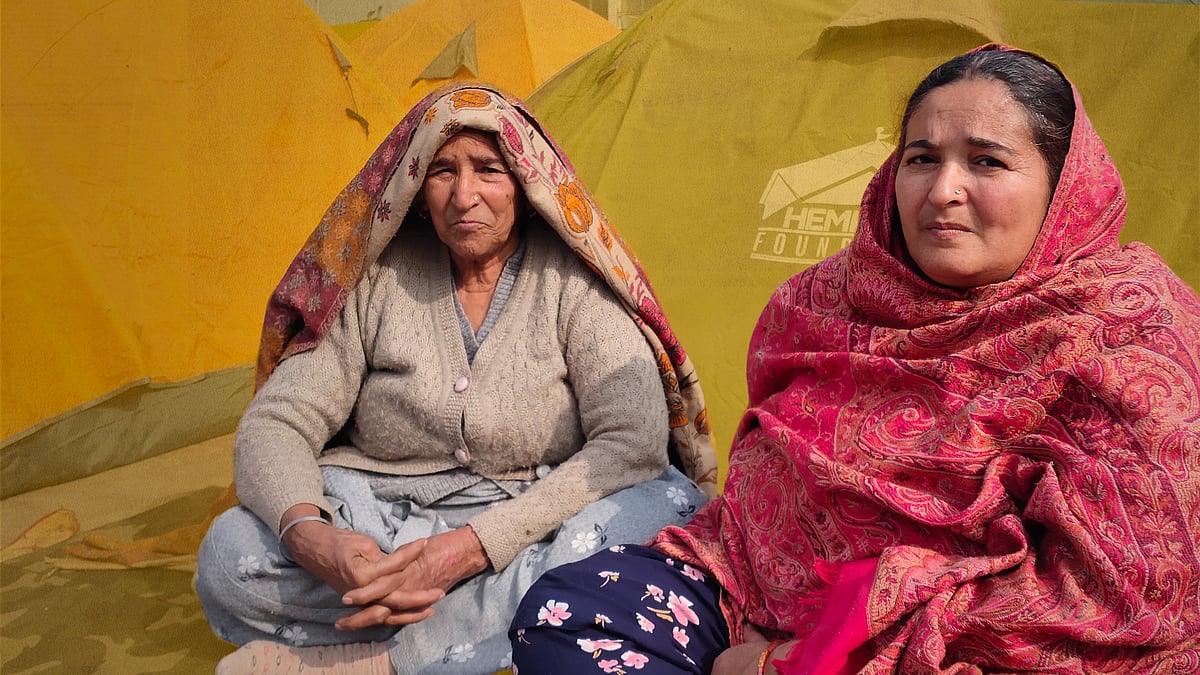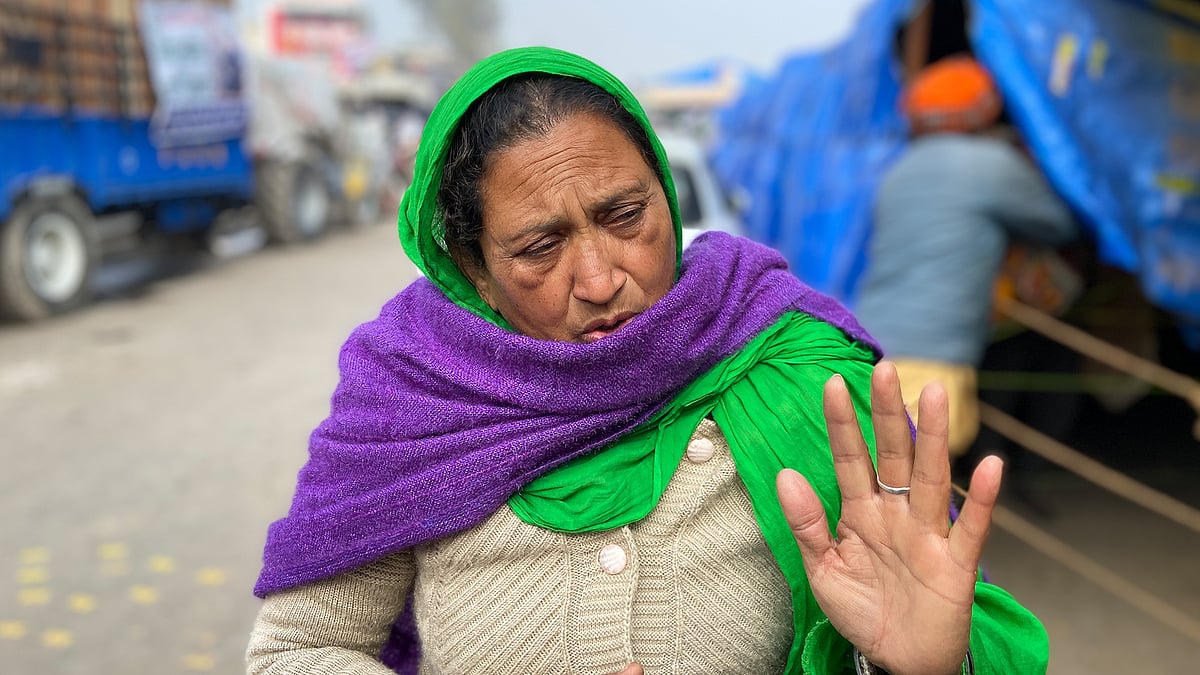Reclaiming the narrative: What farmer protests and Trolley Times tell us about the media’s systemic failure
The farmers’ fight is two-fold, against the new laws and against the media’s misrepresentation.
“Indian national media on sale” reads a banner at the Singhu protest site on the Delhi-Haryana border. Carrying logos of mainstream channels like Republic TV, Zee News, Aaj Tak and ABP News, it sums up the frustration at the ongoing farmer protests against the national media.
On National Highway 1, Singhu is the last village in Delhi before entering Haryana. A quiet village that’s home to nearly 250 families, Singhu has now become the epicentre of the farmer protests.
Since November, thousands of farmers have occupied several miles of the highway, protesting against the Narendra Modi government’s new farm laws. While the government is pushing the laws as “historic reforms”, the farmers have no trust in the government and have been demanding that the laws be repealed.
Over a month later, the ninth round of talks between the farmers and the government took place today and ended in deadlock, yet again. Earlier this week, the Supreme Court stayed the implementation of the laws and appointed a committee to resolve the ongoing standoff. Farmers are sceptical, considering all four members of the panel are on record supporting the Modi government’s position on the laws.
And the anger against the media is palpable. From Zee News proposing a “Khalistani angle” to the protests to sections of the media suggesting the farmers were being “misled”, farmers have been vocal about their anger towards “Godi media”.

Support Independent Media
The media must be free and fair, uninfluenced by corporate or state interests. That's why you, the public, need to pay to keep news free.
Contribute ‘Media has lost our trust’: Why protesting farmers are angry with ‘Godi media’
‘Media has lost our trust’: Why protesting farmers are angry with ‘Godi media’ ‘If they think we’ll leave, they are mistaken’: Farmers at Singhu are unfazed by SC’s decision
‘If they think we’ll leave, they are mistaken’: Farmers at Singhu are unfazed by SC’s decision ‘Sorry, this isn’t a man’s protest’: Women farmers on SC wanting them to go home
‘Sorry, this isn’t a man’s protest’: Women farmers on SC wanting them to go home“We are not saying everyone in the media is bad,” said Suwinder Bajwa, 45, a farmer from Jalandhar who is part of the Singhu protest. “But most of them are not showing the true picture of the protest. You are here; can you see any anti-social elements at the protest?”
So, their fight is seemingly two-fold: against the laws, and against the media’s misrepresentation.
The birth of Trolley Times
The anger led the farmers to start their own biweekly, community-run newspaper – the Trolley Times – in order to reclaim their discourse.
“Initially, our aim was to share information and updates with the community of protesters and to reach a larger audience with concerns and agony of the farmers,” said Navkiran Natt, one of the paper’s founders. “We are trying to bring out real stories of the agitation.”
Navkiran, a dentist who later got her masters in film studies from Delhi’s Ambedkar University, added: “Unfortunately, our mainstream media channels are constantly engaging in hate-mongering and propaganda. So, we have to take our initiatives to counter such narratives.”
The first edition of Trolley Times was published on December 18 and had a print run of 2,000 copies. The second edition had a run of 5,000 copies, and the third 7,000, at the time of writing this report. The paper is printed in Hindi and Gurumukhi, Navkiran said. “Since the paper is being discussed and is in demand outside India too now, we are trying to provide a pdf version of the English version,” she said. “We are trying to keep the language as simple as it can be.”
Trolley Times documents the protests and farmers’ concerns along with literature, poetry and art. Its slogan is a quote from Bhagat Singh: “The sword of revolution is sharpened on the whetting stone of ideas.”
“We collect stories voluntarily, as we are working with very limited resources,” Navkiran said. “We will soon have a website for Trolley Times, we are working on that.”
Navkiran pointed out that this isn't the first time the media has “tried to peddle false narratives”.
“When students were protesting in universities, they were called ‘anti-national’,” she said. “During the citizenship law protests, the media called the protesters ‘terrorists’. When the media portrayed these farmers as ‘Khalistani’, we were not surprised. But what’s important is to debunk those narratives.”
Farmers have also used social media platforms in this endeavour, under the name Kisan Ekta Morcha, or the Farmers’ Unity Front. The group has lakhs of subscribers on YouTube, over three lakh followers on Facebook, and nearly two lakh followers on Instagram.
“During the initial period, union leaders were a little hesitant to start such platforms. But we said we cannot leave the virtual spaces as it has a deep impact,” said Ajay Pal Natt, a founding member of Trolley Times who is actively involved with the Kisan Ekta Morcha. “Now, they have started to understand that a movement must be fought on every front, including the ecosystem of information.”



Ajay, who is also a physiotherapist pursuing his PhD, added: “This is the very first time that the IT cell of the ruling establishment has been on the back foot. We are trying to debunk every false narrative of theirs. We must use our education to help the farmers. They are our parents.”
These sentiments are echoed by Sukhwinder Singh Dhakla, the joint secretary of the Kisan Mazdoor Sangharsh Committee. He said: “We are not against any reporters. They are our sons, they are our daughters. They will speak up, sooner or later, for us when they understand what we are fighting for. We are sleeping in the bitter cold to secure their futures.”
He added: “We are against the corporate houses that control the media. We would not have been able to reach the rest of the country if the social media channels had not been instrumentalised. They provided us with a much-needed voice.”
Symptoms of a wider systemic failure
That the farmers launched Trolley Times and social media accounts is symptomatic of a larger issue: the mainstream media’s active political parallelism.
In 2019, Peeing Human’s Ramit Varma analysed 202 primetime debates on news channels like Aaj Tak, News18, Zee News and India TV. His findings were telling: there was not a single discussion on issues such as farmer distress and unemployment.
Instead of covering these persistent and endemic issues, the media has increasingly taken on the role of pushing hate, propaganda and misinformation that toes the populist line, as was evident during the recent protests against the Citizenship Amendment Act, when channels portrayed the peaceful protesters as anti-national mobs – a narrative that likely contributed to the communal riots that killed 53 people in Northeast Delhi.
It was also evident during the Covid pandemic and subsequent humanitarian crisis, when the media scapegoated the Tablighi Jamaat as being “super-spreaders”, using a combination of communal hatred, conspiracy theories and misinformation. It was even more blatant when some primetime anchors tried to twist narratives around the Hathras gangrape, even referring to it as a “manohar kahani”.
“The mainstream media has been deliberately ignoring issues such unemployment and agrarian distress,” said Trolley Times’ Ajay Pal Natt. “Social media used to be free but certainly now it is not. Even the Kisan Ekta Morcha’s page was taken down by Facebook. There are conscious efforts to curb the voices on social media.”
Facebook had suspended the Kisan Ekta Morcha’s page on December 21, stating that it went “against community standards on spam”. It was restored soon after. “This is what they can do when people raise their voices,” the Morcha had posted on Twitter. “When they can’t beat us ideologically.”
Facebook recently invested $5.7 billion in the Reliance Group and has been accused of being biased towards the government. On August 14 last year, the Wall Street Journal reported that Facebook India did not take down instances of hate speech posted by a Bharatiya Janata Party leader and three other “Hindu nationalist individuals and groups” in order to avoid colliding with the governing party.
The Ambani-owned Reliance Group holds the ownership of the Network18 Group which in turns controls several news channels in India. On December 21, News18 claimed to conduct a survey which showed that 53.6 percent of people stand with the new farm laws, and that 56.59 percent believe the protests should be called off.
Similarly, Gautam Chikermane, vice-president of the Observer Research Foundation, an organisation funded by Reliance, wrote an “intellectual biography of India’s new farm laws”. He wrote: “The three laws that have been enacted by Parliament attempt to take farmers towards harvesting economic gains; they have thus far been held back by outdated laws, manipulated markets and vested interests-driven corruption” – implying farmers are being misled and false narratives have been peddled against a progressive reform.
Chikermane's story was run by another Reliance-funded news organisation, Firstpost.



The propagation of such narratives and portraying farmers as ill-informed shows a recurring theme of corporate-owned platforms. The majority of news organisations in the country is owned either by political parties/leaders or corporate houses. Zee News, for example, is run by Subhash Chandra, a Member of Parliament of the upper house. Bennett Coleman, the group that runs the Times of India, runs a massive network, exercising a virtual monopoly across media.
It is noteworthy that even Prime Minister Narendra Modi was seen in a full-page advertisement for Reliance Jio in September 2016. Unsurprisingly, the media, corporate houses, and political leaders all share close ties with each other.
As rural affairs expert and founding editor of People’s Archive of Rural India, P Sainath, said in a podcast of Indian Journalism Review last June: “When we started out in journalism, there were still newspapers that were the only business the owner had. They were dedicated to the journalism business and what they earned they poured back into journalism. Now one major newspaper owner has 200 other interests.”
With the media being increasingly corporatised, it has buried the story of rural distress, that has been deepening in the recent past. An average of 28 farmers die by suicide every day in India.
“Three years ago, we earned the average national daily dedicates 0.67 percent of its front page to news of rural origin where 69 percent of the population lives,” Sainath had said in the podcast. “That 0.67 percent figure is a huge exaggeration. It is a five-year average with an election year in between. If you take out the election year, coverage is between 0.18 and 0.24 percent.”
He added: “For today's media, 75 percent [of the] population of the country do not make any news. When I joined journalism in 1980, every single newspaper had a labour correspondent, an agricultural correspondent, actually covered farming. Today, the primary function of the agriculture correspondent is to cover the agriculture ministry.”
Starting their own newspaper and social media platforms is the protesting farmers’ statement that they are not ill-informed or naïve, and that they have the courage to face mainstream media channels head-on, as Ajay Pal Natt said. “If we cannot defeat them, we should at least fight to reclaim the narrative.”
Between romanticism and reality
“We are here to protect our land. They call us Khalistani and everything, let them say,” said Balweer Kaur, who came to Singhu all the way from Amritsar. “They do not know anything about Punjab. One of my sons is in the army, another in government service. We will not be deterred by these propagandas. We will not go back until these black laws are repealed.”
She continued: “We have been sleeping in tents, arranging everything we can to survive the cold. It is difficult but we will fight.”
The farmers aren’t contending only with outright misrepresentation. In an attempt to highlight the farmers’ woes, well-meaning accounts on social media and news platforms have romanticised the struggles, with eloquent accounts of their hospitality, hookah, foot massages, and courage. If one were to step back from romanticism, they would sense the protesters’ anxiety, fear and lack of trust in their own government, and their struggle for survival and their livelihoods.
The protesting farmers are struggling for clean drinking water and proper sanitation. Sleeping in the biting cold, away from the comfort of their homes, poses serious health issues, especially for the elderly. The raging Covid pandemic is far from over. The situation only worsened after heavy rainfall: tents and blankets were soaked, roads were muddied, and the farmers tried to clear waterlogging at Singhu border.
In cruel contrast was images of the union home minister eating meals in West Bengal, where elections are due, spotlighting the inattention to protests just a few kilometres from Delhi’s ministerial bungalows. The prime minister addressed farmers in different states, but not those protesting in and around Delhi. Channel tickers, such as “Atmanirbhar Push” and “Mega Vikas Push”, whenever the prime minister has a live telecast show how the fourth pillar of democracy functions.
One for all and all for one
“Corporates will not do any good to the farmers. Their whole purpose would be to make money out of everything,” said Jaspal Singh, who came to Singhu from Ludhiana for the protests. “It is the responsibility of the state to protect us. The government is selling everything to these corporations, including the railways. How can I trust such a government?”


“The protest has certainly been evolving,” said Trolley Times’ Navkiran Natt. “Now, it’s not only about Punjab and Haryana. Every section of the country is now participating and supporting this movement.”
The protests seem to be challenging the dominant economic structure of the country that has formalised inequality in society. “The protest is against the capitalist model of the country that has shaped policies for the last 30 years,” Navkiran said. “The anger is a culmination of those policies that are being made to benefit a few houses.”
Farmers are not only speaking for themselves but also raising their voices against the subversion of democratic institutions under the current regime, speaking to the manner in which an institution such as Parliament is being turned into a signboard, where only executive decisions are being announced and written.
As Bajwa pointed out, “If the corporates control the supply chain of foodgrains, it will affect every citizen of the country. They will have to speak up then, but it will be too late.”
He said: “Agriculture is not the Centre’s subject (under the constitution) to deal with but they bypassed it by bringing it as a trade bill. They did not allow any discussion when the bills were tabled in the Parliament. They did not even bother to consult farmer leaders. How can we trust such a government on what they are assuring?”
As P Sainath argued in PARI: “These are surely among the most sweeping exclusions of a citizen’s right to legal recourse in any law outside of the Emergency of 1975-77...Surely the ‘mainstream’ media (a strange term for platforms whose content excludes over 70 per cent of the population) cannot be unaware of these implications of the new farm laws for Indian democracy. But the pursuit of profit drives them far more than any notion of public interest or democratic principles.”
When I was leaving Singhu border, a policeman at the barricade suggested, as paternalistically as Indian men can be, “Babby, college jaayo karo.” Dear, go to college. To which my female friend responded, “I have been to college. Precisely why I am here to support my fellow-citizens.”
In the recent past, the media has demonised every protesting citizen who speaks up against the government’s decisions. With the future of Indian democracy at a critical junction, my friend’s response, the protesting farmers, and Trolley Times sparks some hope.
All photos by Aamaan Alam Khan.

Power NL-TNM Election Fund
General elections are around the corner, and Newslaundry and The News Minute have ambitious plans together to focus on the issues that really matter to the voter. From political funding to battleground states, media coverage to 10 years of Modi, choose a project you would like to support and power our journalism.
Ground reportage is central to public interest journalism. Only readers like you can make it possible. Will you?
